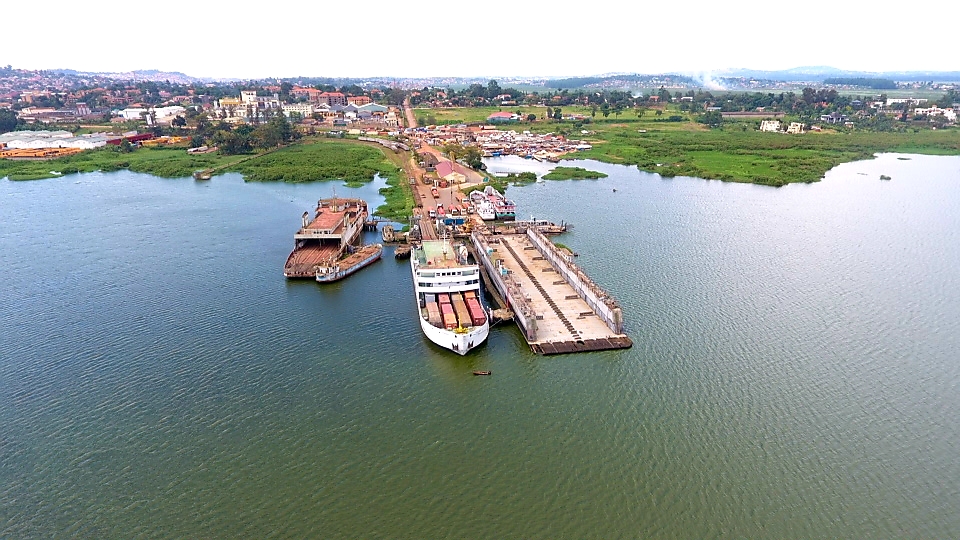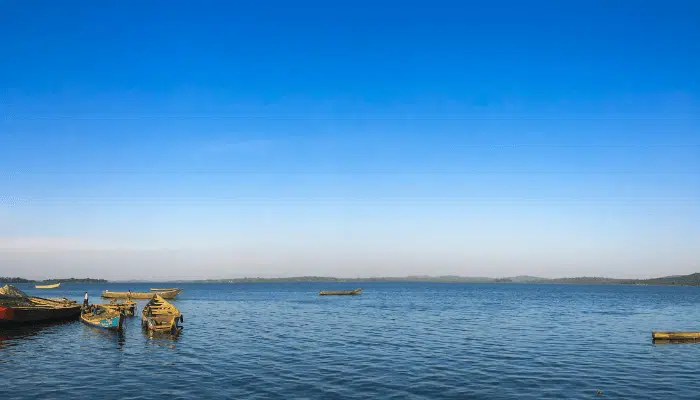Share
Uganda also has many small rivers as it lies in the basin of the Nile. It has a rich and diverse topography but it is far from the sea hence devoid of seaports.
However, Uganda has two main inland ports and some other harbours that have been rendered defunct and underdeveloped, a consequence of the internal turmoil witnessed by the state during the civil war years.
Uganda is dependent on the port facilities of neighbouring nations like Kenya and Tanzania for its export-import trade with the world. Kenya’s main seaport lying on the coast of the Indian Ocean, the Mombasa port is utilised by Uganda for carrying out its maritime trade.
Nonetheless, the Ugandan government has undertaken measures to develop its own port facilities and terminals to reduce dependence on its neighbours such as planning a second route to the Indian Ocean via Bukasa dry port and Musoma, linked by railways to Tanga port.
However, lack of finances has often halted planning and port development projects. Uganda struggles to improve its economy which is impoverished and dependent on international aid for developing even its port infrastructure.
Although there has been slight economic growth, it has not resulted in the abatement of unemployment and poverty. Agriculture has been the backbone of the economy whereas manufacturing and services have not witnessed significant development. The country’s public sector is one of the most corrupt institutions in the world, hence foreign investment has been meagre.

1. Port Bell
The port Bell is situated at the end of Lake Victoria, with a narrow entrance channel. It is Uganda’s main inland port handling most of its import and export trade. The government is negotiating with the World Bank for modernizing the port since it needs to be dredged for accommodating bigger vessels. Port expansion could not be achieved since the region is densely-settled, leading to increased costs, beyond the ambit of the government’s finances.
The area around the port has grown into a small industrial region as it is adjacent to Uganda’s commercial centre of Kampala. Numerous small industrial units such as Uganda Breweries, Cipla Chemicals, etc are located near the port facility. Their goods such as beer, medicines, chemicals, food, coffee, and fish are transported to the neighbouring regions through ferries and small boats.

2. Port of Jinja
The Jinja harbour is situated on Lake Victoria, in the southeastern part of Uganda at a height of more than 1000 m above sea level. It is the second-most important Ugandan port after Port Bell.
The Jinja town was established in 1901 by the British colonisers. It grew as an urban centre with the establishment of the railway line connecting the town. The British prompted cash crop production, and cotton and tea were transported after the establishment of a pier at Jinja. It grew further with the development of dams, which provided hydroelectric power in the late 1990s.

3. Tororo Inland Port
The dry port of Tororo lies in the Ugandan city of Malaba, situated near the Kenyan border. The port facility spans 100 hectares and its construction began in 2010, however political and socio-economic issues have arrested the completion of this port project.
The port was being refurbished by the Great Lakes Ports Limited which would serve as the port authority after its completion. The government has envisaged it to be a container storage terminal for containerised goods shipped to Uganda, Burundi, Sudan and Congo.

4. Bukasa Inland Port
The government of Uganda planned to construct another port facility to boost the country’s trade network. The Bukasa port development started in 2019 however it stopped midway due to the government’s demand of renegotiating its financial agreement with the German port development firms and involving African companies to reduce costs.
The port is expected to become fully operational by 2030 and would comprise administration offices, wharves, multi-purpose terminals and shipyards. The port would handle around 5 million tonnes of goods every year.

5. Port of Butiaba
The port facility of Butiaba lies on the eastern coastline of Lake Albert in the northwestern region of Uganda, part of the Masindi area. Butiaba harbour was an important maritime point for transporting goods from Congo and Sudan. From Butiaba, the goods were transported by roadways to Masindi port from where they were ferried to Soroti. Finally, loaded into trains, these were sent to Mombasa for export.
In the late 90s and 2000s, the railways in the region became defunct due to lack of maintenance, hence leading to the degeneration of the Butiaba port. However, recently petroleum and oil reserves have been found near Lake Albert which means rejuvenation of port operations for transporting petroleum and oil from this harbour. However, this depends on government initiatives.
Apart from trade, Butiaba harbour attracts many tourists due to its scenic beauty and Lake Albert which is famous for bird-watching, fishing and boating.
